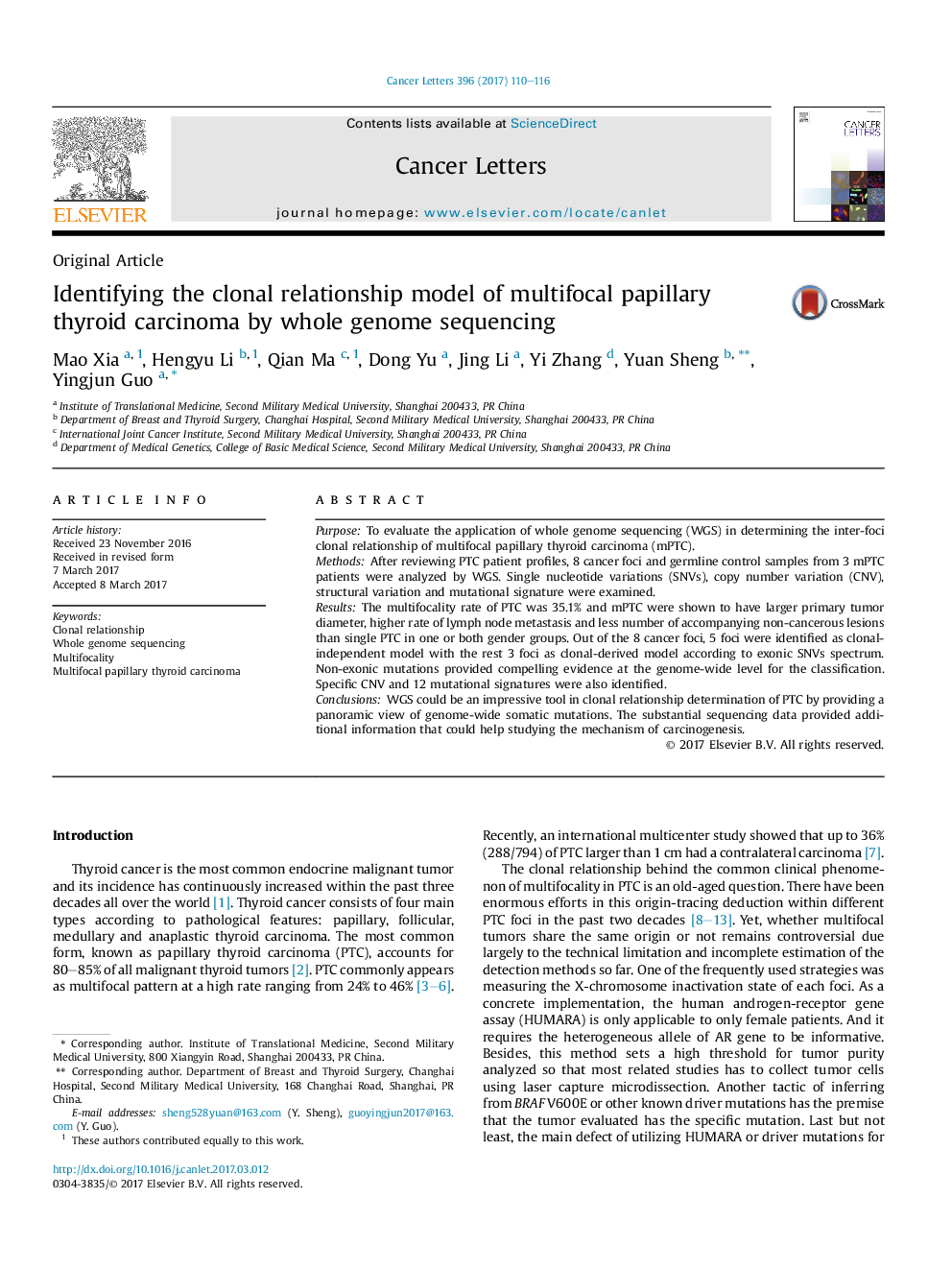| Article ID | Journal | Published Year | Pages | File Type |
|---|---|---|---|---|
| 5525591 | Cancer Letters | 2017 | 7 Pages |
â¢The incidence rate of multifocality reached 35% in our cohort consisting of 920 PTC patients.â¢Multifocal PTC presented unique clinicopathological characteristics including higher preference for lymph node metastasis.â¢Both clonal-independent and clonal-derived model were identified in the 8 cancer foci studied.â¢Non-exonic mutations could play a critical role in clonal relationship analysis.â¢Whole genome sequencing additionally offered crucial information about the molecular genetic characteristics of cancer.
PurposeTo evaluate the application of whole genome sequencing (WGS) in determining the inter-foci clonal relationship of multifocal papillary thyroid carcinoma (mPTC).MethodsAfter reviewing PTC patient profiles, 8 cancer foci and germline control samples from 3 mPTC patients were analyzed by WGS. Single nucleotide variations (SNVs), copy number variation (CNV), structural variation and mutational signature were examined.ResultsThe multifocality rate of PTC was 35.1% and mPTC were shown to have larger primary tumor diameter, higher rate of lymph node metastasis and less number of accompanying non-cancerous lesions than single PTC in one or both gender groups. Out of the 8 cancer foci, 5 foci were identified as clonal-independent model with the rest 3 foci as clonal-derived model according to exonic SNVs spectrum. Non-exonic mutations provided compelling evidence at the genome-wide level for the classification. Specific CNV and 12 mutational signatures were also identified.ConclusionsWGS could be an impressive tool in clonal relationship determination of PTC by providing a panoramic view of genome-wide somatic mutations. The substantial sequencing data provided additional information that could help studying the mechanism of carcinogenesis.
